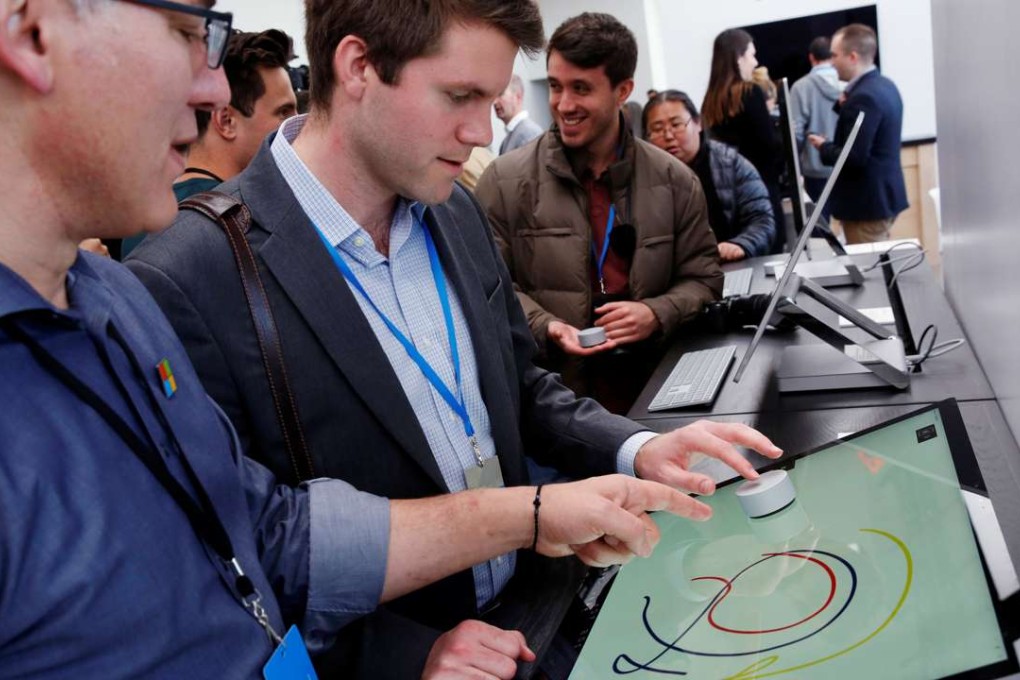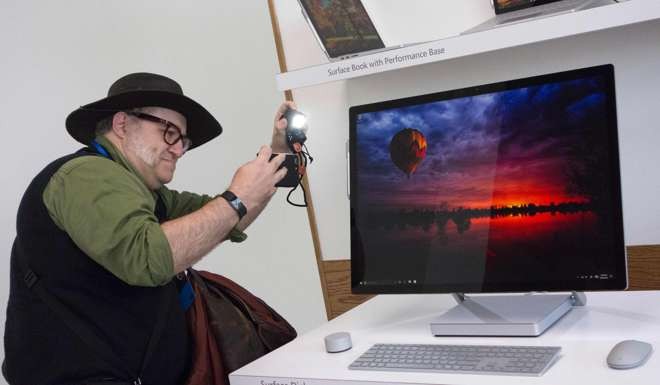Microsoft takes aim at Apple with high-end PCs and 3D software
Surface Studio desktop computer from Microsoft challenges the dominance of the Apple iMac among creative users, while Windows 10 update lets users create in 3D. Apple weighs in with Touch Bar-equipped MacBook Pro line

Ahead of the holiday season both Microsoft and Apple have released new products that they hope will not only boost user experience but also customer loyalty.
Microsoft launched a new consumer offensive with a high-end computer that challenges the Apple iMac, along with an updated Windows operating system featuring three-dimensional content and “mixed reality”. Meanwhile Apple unveiled its new MacBook Pro with a touch-screen row of keys a day after the launch of the Surface Studio.
How Apple lost a round to Microsoft in high-end computing battle
Microsoft’s first desktop computer, called the Surface Studio, is a US$3,000, “all-in-one” device aimed at creative professionals, a segment dominated by Apple.
“We’re creating a new category that transforms your desk into a creative studio,” Microsoft chief executive Satya Nadella said at the unveiling in New York on October 26.

With a large, 28-inch hinged touch-screen display touted as “the thinnest desktop monitor ever created”, the Surface Studio adds to the Microsoft line-up of tablet and laptop devices for the premium segment.